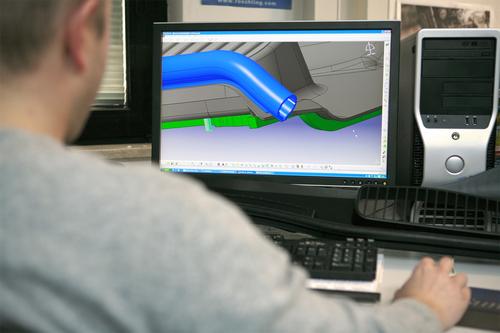July 17, 2011
The two-component process reduces the weight of the assembly 30 percent and cut costs 10 percent, while improving quality by creating a more permanent seal.
Up to now, the molded carrier and the hollow elastomer seal were manufactured separately and assembled in a discrete step. The hollow chamber seals had to be produced in a dedicated extrusion line often located offsite from the assembly location.
In the new process, an EPDM (ethylene propylene diene monomer) rubber bulb is hollowed out in an injection molding machine using a projectile injection technology (PIT) developed byRöchling Automotive.
The rubber bulb is chemically bonded to a polypropylene structural carrier in the injection molding machine, reducing the risk of detachment.
"Superior quality of the two-component bonding and the hollow chamber sealing -- without a cost penalty. These are the advantages of the PIT-cowl grille of Röchling," says Ludwig Huber, R&D director at Röchling Automotive, in an interview.
The seal can be manufactured in lengths of up to 1.5m (4.9ft) with constant wall thickness and complex 3D shapes fulfilling a variety of design requirements, according to the Röchling officials.
Wall thickness can be varied to suit different sealing or force requirements along the length of the seal. This can boost protection for pedestrians and prevent a phenomenon called "flutter," common with hoods made from thin-gauge steels.
The seal compensates for vehicle tolerances of up to 10mm in line with closing pressure. The seal can be made longer, shorter, or equal to the length of the carrier. It can even comprise T- or V-shaped junctions.
The key to the assembly is the in-mold technology. After the hard component of the cowl grille (the carrier) is molded, a slider opens to allow the seal cavity to be filled with elastomer material. A projectile then forces the majority of the still liquid elastomer out, leaving an accurate elastomer wall behind. The ejected material is recycled for use in the next cycle, thus minimizing waste. The still-warm carrier chemically bonds with the sealant.
The new process is in production on the new Ford C-Max.

0 comments:
Post a Comment